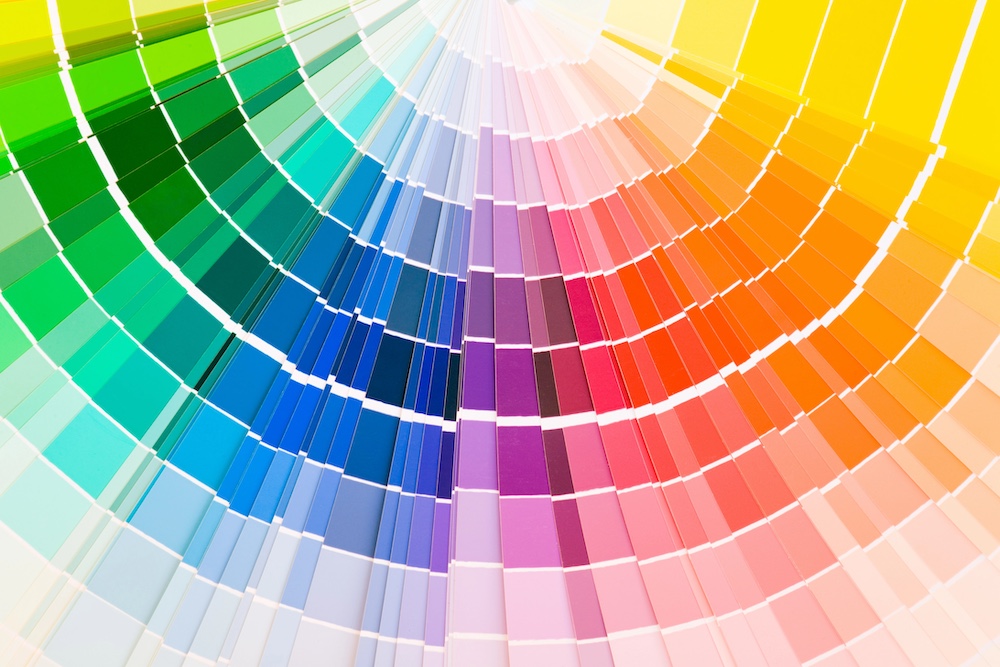
Web Design Color Palette Basics
This expert article highlights web design color palette basics – and the best practices for applying a systematic use of colors to a website design.
Web Design Color Palette Basics: The Power of Three
When it comes to applying colors to a website design, the power of three prevails. In plain English, that means THREE colors are needed for the website. These 3 colors would be assigned a specific function or element in the website design – and applied consistently on all pages of the website.
The 3 colors in the color palette would each be assigned to the following elements:
- The H1 headline (the master headline on each page)
- The H2 headline (the sub-headline)
- Call-to-action buttons
Learning Point 1: When selecting colors to use on your website, the best practice is to choose 3 colors.
Learning Point 2: The 3 colors that you choose should be deep, rich colors that are easy to read in regular and low-light situations.
As part of the design instructions to the individual or team that will actually be designing and building your website, you’ll need to give them the specific colors you want, and how to apply those colors on all website pages.
Web Design Color Palette Basics: How Color Palettes Are Developed
There are multiple ways that colors for a website can be chosen:
- You can choose colors from a Pantone Matching System (PMS) color book or online color directory. To see a vast array of PMS colors, visit: https://www.pantone-colours.com/
- You can have your graphic designer or website developer generate color combinations.
- You can use online color scheme generators. Some are free. Some are paid. Adobe and Canva – along with many other color palette generators – have offerings where you simply plug in the master color that you want, and the system will generate pages of color palettes from which to choose.
Web Design Color Palette Basics: How Colors Are Coded
Just like when you go to a paint store, and the paint color chips have specific numbers, digital colors to be used for a website also will feature a specific code. There are 2 ways digital website colors can be coded:
- Color Code Type 1: PMS Color Code – When you choose colors from the Pantone Matching System, PMS colors will have a 3-digit or 4-digit code. The PMS color can be applied to printing, and also can be converted to the color coding used for digital applications, i.e., “hex” codes. To convert a PMS color that you like to a hex color code, conduct a google search for “PMS to Hex Code Conversion.” A number of free online tools will appear to convert the PMS color code to a hex code and vice versa.
- Color Code Type 2: Hex Code – Hex color codes are codes for colors to be used in digital applications such as websites and email marketing. The hex code will have 6 digits which is all numbers, all letters, or a combination of numbers and letters.
The use of specific color codes that are specified for a website helps keep the use of the colors consistent.
Bottom line: When you’re developing a new website, or refreshing an existing website, you’ll need to follow these best practices for web design color palette basics:
1) Choose 3 deep, rich colors that are easily visible & readable in regular light and low-light situations.
2) Assign a specific use for each color, i.e., a specific color for the main H1 headline, a specific color for the H2 sub-headline, and a specific color for the call-to-action buttons.
3) Document the specific code for each color.
4) Provide your website designer or web design team with the 3 colors for the website color palette, including the specific color codes + let them know how each color should be applied, i.e., which color is for the main headline, the sub-headline, and the button.
When you apply colors to your website design in a consistent manner, it helps create a stronger user experience. Site visitors become accustomed to seeing colors applied consistently, which particularly helps users spot call-to-action buttons purely by looking for the color.
If you need help developing a web design color palette, contact DeWinter Marketing & PR USA.

